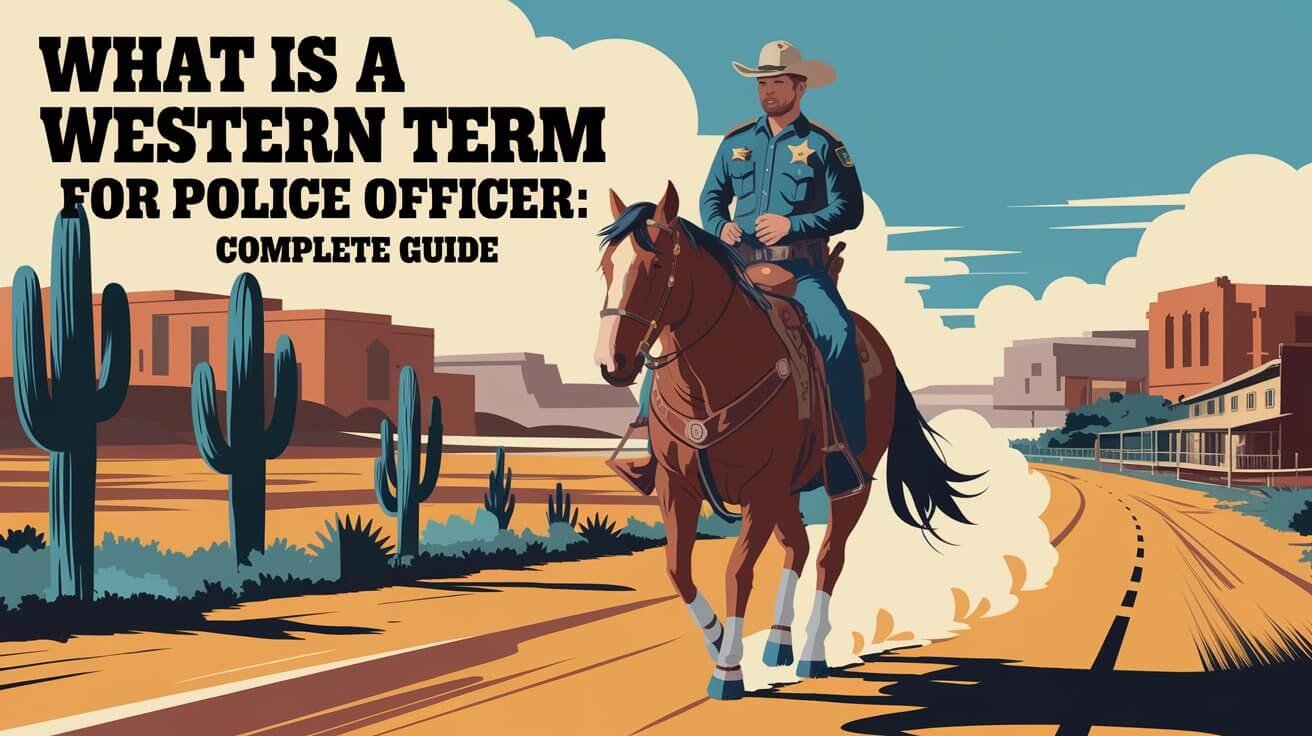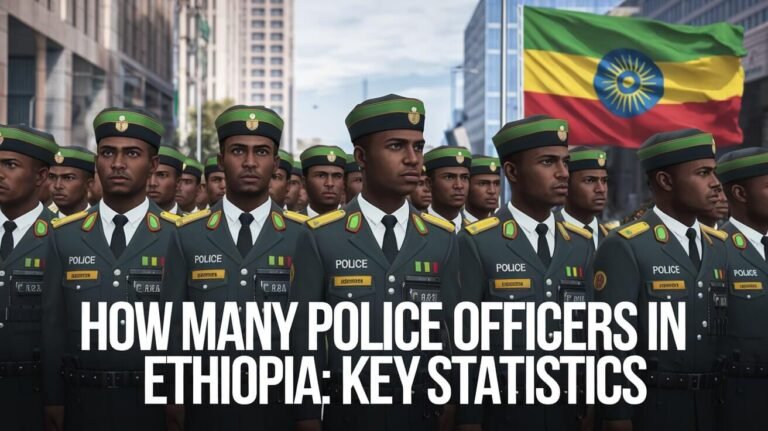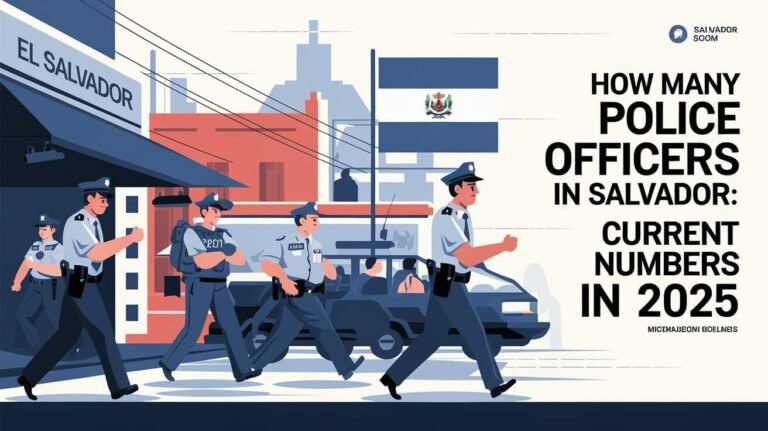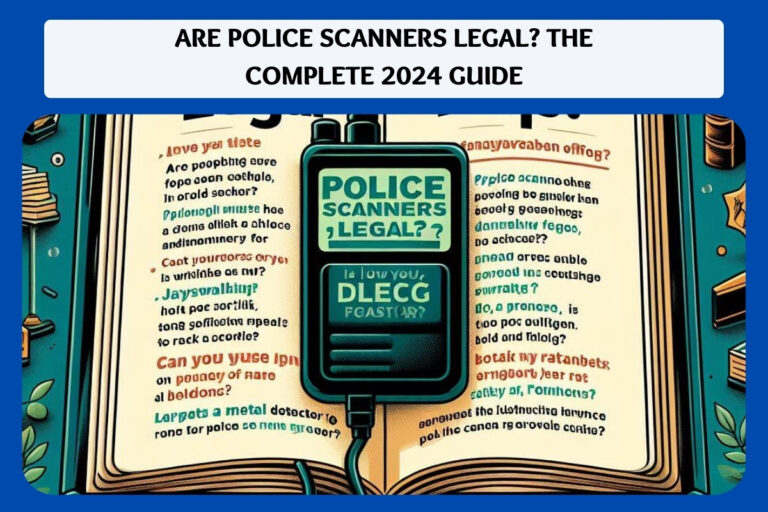What Is A Western Term For Police Officer: complete guide

In the United States, police officers are known by many Western terms. These terms reflect the country’s rich law enforcement history. “Lawman” is a key term, used to describe officers in the American West. It shows their role in keeping order and justice.
Law enforcement agencies like the FBI, ATF, and DEA have their own slang. This shows the variety of terms for police officers. Using these terms highlights the American West’s unique culture and the importance of police. “Lawman” represents justice, courage, and service, core values in law enforcement and society.
Origin of “Lawman” in the American West
The term “lawman” comes from the American West. It was used for someone who kept law and order. The word “law” means the rules of society. In the West, a lawman was someone who made sure these rules were followed.
The history of law enforcement terms in the West is rich. Different areas had their own ways of calling law officers. For example, “lawman,” “marshal,” and “sheriff” were often used together. Each term has its own history tied to keeping the peace.
Etymology and First Usage
The word “lawman” first appeared in the mid-19th century. It described someone who enforced the law in a certain area. By the late 19th and early 20th centuries, it became more common. Today, it’s used to describe anyone who keeps the peace.
Historical Context of Law Enforcement Terms
The American West has a long history of law enforcement. Famous lawmen like Virgil Earp and Bill Tilghman helped shape the region. Their stories show the importance of law and order in the West.
Regional Language Development
Language varied across the West, affecting how people called law officers. In the South, “lawman” was common, while in the North, “marshal” was used more. Understanding these differences helps us see the complex history of law enforcement in the West.
The Badge Toters of the Frontier
In the American frontier, law enforcement was key to keeping order and justice. The term “badge toter” meant a police officer. They enforced laws, helped travelers, and kept the peace. Their badges showed their power and duty.
Notable figures like Pat Garrett, who became sheriff in New Mexico in 1880, were important. The Three Guardsmen – Bill Tilghman, Heck Thomas, and Chris Madsen – caught over 300 outlaws and killed a dozen in Oklahoma from 1889. Others, like Doc Holliday and John Coffee Hays, also made big impacts.
Badge toters had many roles. They enforced laws, helped travelers, and kept the community safe. They were true pioneers in law enforcement.
- Enforcing laws and regulations
- Providing assistance to travelers and settlers
- Maintaining order and justice in the community
Today, the U.S. Marshals Service and other agencies keep law and order in the U.S. Their badge toters are symbols of authority and duty.
Sheriff vs Marshal: Key Differences in Western Law Terms
In the American West, sheriff and marshal are often mixed up. But they have clear roles in law enforcement. Knowing their differences helps us understand their authority, where they work, and what they do.
Sheriff Authority and Jurisdiction
A sheriff keeps the peace in a county or area. They are chosen by the town council for a short time, usually two to four years. Their main jobs include:
- Keeping and preserving peace
- Suppressing affrays, riots, and insurrections
- Serving as tax collectors and maintaining peace in their respective counties
Marshal Roles and Responsibilities
A marshal works for the federal government, enforcing laws in a territory or region. They were picked by the Attorney General. Their tasks include:
- Dragging drunks to jail
- Collecting debts and taxes
- Settling petty disputes
Popular Western Terms for Police Officer
Western terms for police officers have changed over time. Slang terms like lawman, badge toter, sheriff, and marshal are now part of American West culture. These terms show the rich heritage of the American West.
Today, people often use “police officer,” “policeman,” and “cop.” The term “police officer” is used 4 times in recent examples. “Policeman” is found in 3 excerpts. “Cop” shows up in 2 examples, and “constable” is mentioned once.
Other Western terms for police officers include:
- Sheriff: appeared twice in recent material
- Copper: used once in an example sentence
- Lawman: noted in 3 different instances
- Peace officer: appeared once in a news piece
- Bobby: mentioned once as a Western term for a police officer
These terms have been shaped by cultural exchange, location, and history. Knowing these terms helps us understand law enforcement language in the American West.
| Term | Frequency of Use |
|---|---|
| Police Officer | 4 |
| Policeman | 3 |
| Cop | 2 |
| Constable | 1 |
| Sheriff | 2 |
| Copper | 1 |
| Lawman | 3 |
Hollywood’s Influence on Western Law Enforcement Terms
Hollywood has greatly shaped the language of Western law enforcement. Movies and TV shows have made some terms very popular. For example, “lawman” became a term for a heroic police officer in the American West.
Hollywood’s impact is clear in the American West’s language. Classic Western movies and TV shows made police officers into heroes. Characters like Clint Eastwood’s “Dirty Harry” are now icons in popular culture.
Classic Western Movies Impact
Some classic Western movies have greatly influenced law enforcement terms. Here are a few examples:
- “Dragnet,” a TV hit from 1951, helped popularize the police procedural genre and promoted positive policing ideas.
- “Dirty Harry” and “Magnum Force” showcased Clint Eastwood as a rogue cop icon.
Television Series Terminology
TV series have also played a big role in making Western law enforcement terms popular. Shows like “Cops” and “Live P.D.” have been widely watched. They have shaped how people see law enforcement and the terms used to describe it.
Regional Variations Across the American Frontier
The American frontier was vast and diverse. Different regions had their own law enforcement terms. Some called them “lawmen,” while others used “sheriff” or “marshal.”
These terms show the unique cultures and histories of each area. For instance, the South had slave patrols to protect Whites and control Blacks. In contrast, Northern cities followed London’s policing ways.
Some key regional variations in law enforcement terms include:
- South: slave patrols and sheriff’s departments
- North: London-style policing models and marshal’s offices
- Frontier: extralegal enforcement and lawmen
Understanding these variations helps us see the complex history of law enforcement in the American frontier. By looking at the different terms for law officers, we learn about the social, cultural, and historical backgrounds of each region.
| Region | Law Enforcement Terms | Description |
|---|---|---|
| South | Slave patrols, sheriff’s departments | Established to protect Whites and police Blacks |
| North | London-style policing models, marshal’s offices | Influenced by British policing models |
| Frontier | Extralegal enforcement, lawmen | Characterized by informal and often violent law enforcement |
Native American Interactions With Western Law Officers
The relationship between Native Americans and Western law officers was complex. Cultural exchange played a big role in the development of law enforcement terms. The term “lawman” wasn’t always used for police officers. Some Native American tribes had their own terms for law enforcement.
The United States Indian Police (USIP) was founded in 1880. It was created to police the Five Civilized Tribes. The USIP could handle serious crimes like manslaughter and murder in Native American communities.
Law Enforcement Terms and Tribal Police
Reservations also had Indian tribal police and Indian agency police. They enforced tribal laws and kept order. The Indian Police Academy started in 1968 to train Native American officers.
Some notable examples of Native American interactions with Western law officers include:
- The USIP officers were initially recruited from Indian Lighthorsemen and were given Deputy U.S. Marshal commissions to arrest non-Indians.
- Outlaw gangs like the Cooks, Starrs, and Daltons posed a challenge to the USIP, with Bob Dalton exploiting his position as Chief of the Osage Police for criminal activities.
- Former High Sheriff of the Cherokee Nation, Sam Sixkiller, served as the Captain of the US Indian Police and was killed in the line of duty in 1886 by two Indians.
| Year | Event | Description |
|---|---|---|
| 1869 | First federally-sponsored Indian police force | Established by Thomas Lightfoot, the United States Indian Agent to the Iowa and the Sac and Fox tribes. |
| 1872 | Navajo cavalry | Organized by General Howard to guard reservation boundaries, leading to the successful recovery of 60 stolen heads of stock within three months. |
| 1874 | San Carlos Reservation Agent | Hired four Apaches at $15 a month as police, eventually growing the force to 25 members. |
The cultural exchange between Native Americans and Western law officers shaped law enforcement. It led to the use of different terms and phrases. These terms described the complex relationships between law enforcement and Native American communities.
Famous Historical Western Law Officers
The American West was home to many famous law officers. They played a key role in keeping the peace. Their bravery and skill are legendary.
Wyatt Earp and Wild Bill Hickok are well-known names. Earp worked in several places, including Arizona. Hickok was Marshal in Kansas. Bat Masterson and Bass Reeves also made a mark. Masterson worked in Kansas and Colorado, while Reeves was a Deputy U.S. Marshal in Indian Territory.
Here are some key facts about famous historical Western law officers:
- Wyatt Earp was involved in the famous O.K. Corral gunfight in 1881.
- Wild Bill Hickok was known for his quick draw and accuracy with a gun.
- Bat Masterson was a close friend and ally of Wyatt Earp and played a key role in the law enforcement efforts in the American West.
- Bass Reeves was a former slave who became one of the most successful lawmen in the American West, arresting over 3,000 outlaws during his career.
These law officers are famous worldwide. Their stories have been told in books, movies, and TV shows. They inspire new law enforcement officers with their bravery and dedication.
| Name | Position | Location |
|---|---|---|
| Wyatt Earp | Marshal | Tombstone, Arizona |
| Wild Bill Hickok | Marshal | Abilene, Kansas |
| Bat Masterson | Deputy Sheriff | Ford County, Kansas |
| Bass Reeves | Deputy U.S. Marshal | Indian Territory |
Evolution of Police Officer Terms From West to East
The way we talk about police officers in the United States has changed over time. This change happened as the country grew from west to east. In the West, people often called them “lawmen.” But in the East, they started using “police officer” and “law enforcement officer” more.
This change in words came from how terms move around the country. For example, “marshal” was first used in the West. But as the country grew, it became more common everywhere.
Key Factors in Term Evolution
Several things helped police officer terms change, including:
- Geographical expansion and migration
- Cultural exchange and influence
- Changes in law enforcement roles and responsibilities
These factors led to new words and phrases. They were shaped by local dialects and cultural traditions. The way police officer terms have changed shows how language is always evolving.
Modern Adaptations
Today, police officer terms are changing again. This is because of new ways of policing and better community relationships. Terms like “community policing” show a move towards working together more.
As the United States keeps growing and changing, so will police officer terms. They will reflect the country’s new needs and values.
Modern Usage of Western Police Terms
The American West’s influence is seen in today’s law enforcement language and culture. Terms like “sheriff” and “marshal” are used, but their meanings have changed. This shows how law enforcement has evolved.
Western police terms link the past to the present in law enforcement. New terms and phrases have come up to describe police and community relationships. For instance, “lawman” is used today, but not as much as before.
Here are some examples of Western police terms in use today:
- “Constable” is used in some police departments, just like in the American West.
- “Sheriff” is a title for county law enforcement officials.
- New terms like “community policing” and “law enforcement officer” describe the changing role of police.
The use of Western police terms today shows law enforcement’s dynamic nature in the U.S. As police adapt to new social and cultural changes, these terms will likely stay important in law enforcement language and culture.
Cultural Impact on Contemporary Law Enforcement Language
The way we talk about law enforcement has changed a lot. New terms and phrases have come up to describe how police officers relate to their communities. The American West has had a big influence on these changes.
Studies show that the racial makeup of police forces has shifted over time. For instance, in 1993, the numbers were:
- 80.9% White
- 11.3% Black
- 6.2% Hispanic
- 1.5% Other minorities
This change shows the need for more diverse and inclusive language in law enforcement.
There’s also a push to make police forces more diverse. Programs like the Advancing Diversity in Law Enforcement initiative aim to increase diversity. By understanding these changes, we can build a more inclusive and effective police system.
| Year | Percentage of White Officers | Percentage of Minority Officers |
|---|---|---|
| 1993 | 80.9% | 19.1% |
| 2016 | 63.4% | 36.6% |
In Closing
The term “lawman” is a big part of American history and culture. It shows how law enforcement officers and communities interact. The way police terms changed as the U.S. grew is fascinating.
Today, Western police terms connect our past and present. New phrases describe the complex relationship between law enforcement and the public. This shows how language shapes our view of law enforcement.
The legacy of the Western “lawman” is strong. It reminds us of the lasting impact of regional language. It shows how language can cross time and space.
Frequent Questions
What is a Western term for police officer?
In the West, a police officer is often called a “lawman.” This term comes from the early days of the American West. Back then, keeping order and justice was key.
What is the origin of the term “lawman” in the American West?
The term “lawman” started in the American West. It was used for those keeping law and order. The word “law” means the rules of society.
What was the term “badge toter” used to refer to?
“Badge toter” was a term for police in the frontier. They kept order and helped travelers and settlers. Their job was to enforce laws and assist others.
What are the key differences between “sheriff” and “marshal” in Western law enforcement?
“Sheriff” and “marshal” are different in Western law. A sheriff enforces laws in a county. A marshal works for the federal government, enforcing laws in a territory.
What are some popular Western terms used to refer to police officers?
Popular terms for police include “lawman,” “badge toter,” “sheriff,” and “marshal.” These terms have changed over time, with some becoming more common.
How has Hollywood influenced Western law enforcement terms?
Hollywood has shaped Western law terms. Classic movies and TV shows made “lawman” a symbol of heroism. It showed a police officer keeping justice in a small town.
How did regional variations in the American frontier shape law enforcement terms?
The American frontier had many law terms. “Lawman” was used in some areas, while “sheriff” and “marshal” were used in others. This shows the unique cultures and histories of each region.
How did interactions between Native Americans and Western law officers influence law enforcement terms?
The relationship between Native Americans and Western law officers was complex. Cultural exchange helped shape law terms. Native American tribes had their own ways to describe law officers.
Who were some famous historical Western law officers?
Famous lawmen include Wyatt Earp, Doc Holliday, and Allan Pinkerton. They were known for their bravery and dedication. Their names are linked to the American West.
How has the evolution of police officer terms from West to East reflected the geographical term migrations?
Police terms changed as the U.S. grew. “Lawman” was used in the West, but “police officer” and “law enforcement officer” came later. This shows how terms moved with the country’s expansion.
How is the modern usage of Western police terms, such as “lawman,” relevant today?
Today, “lawman” is not as common as it once was. But it’s not forgotten. Terms like “sheriff” and “marshal” also have a place in modern law enforcement.
How has the cultural impact on contemporary law enforcement language influenced the way law enforcement is perceived and understood?
Culture has a big impact on law enforcement language today. Different terms reflect the complex relationships between officers and communities. The American West’s influence is clear in many law enforcement terms.






